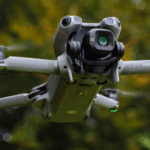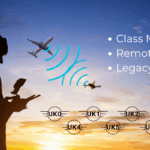Introduction to Drone Dock-Hanger Solutions
Leading companies in the unmanned aerial vehicle (UAV) sector have introduced innovative docking solutions designed to facilitate autonomous drone operations. These advanced docking stations integrate cutting-edge technology with practical applications, aiming to revolutionize various industries by enhancing the efficiency and capabilities of drone operations. In this blog, we will explore the specifics of one such product, the DJI Drone Dock 2. While the implementation details are somewhat consistent across various drone docks or hangars, the DJI model offers a unique perspective on this technology.
We’ll delve into the key benefits and considerations of employing drone docking stations, examining how they can streamline operations and extend the functional reach of UAVs across different sectors. Additionally, we will discuss the potential future directions that these drone docks could lead us towards. Included in this blog are links to potential case studies. While these are based on anticipated future uses pending formal policy enactment, the scenarios discussed are expected to be operational within the next 12 months, showcasing the immediate relevance and applicability of drone dock technologies in real-world settings.
What is a drone dock/hanger?
A drone dock or hanger, like the DJI Drone Dock 2, is a specialized infrastructure designed to facilitate the autonomous operation, charging, and storage of drones. These systems are particularly useful in industrial, commercial, and surveillance applications where drones are required to operate independently or over large areas.
The DJI Drone Dock 2 is an advanced example of this technology, offering seamless integration with DJI drones, robust weatherproofing, and sophisticated management software, making it suitable for various industrial and commercial applications.
Key Features of a Drone Dock/Hanger:
Drone docks and hangars represent transformative advancements in unmanned aerial vehicle operations, providing essential services that enhance the functionality and reliability of drone activities across multiple industries. Here’s how these facilities are set to shape the future:
- Autonomous Landing and Takeoff:
The drone dock provides a designated area where drones can autonomously land and take off. The docking system is equipped with precision landing technology to ensure that drones can return to the dock safely without human intervention.
- Automated Charging:
One of the primary functions of a drone dock is to recharge the drone’s batteries. The dock typically includes contact points or wireless charging systems that begin recharging the drone as soon as it lands. This allows for continuous operation without the need for manual battery swapping.
- Weather Protection:
Drone docks like the DJI Drone Dock 2 are often weatherproof, providing protection from rain, wind, and dust. This ensures that the drone is kept safe and operational even in harsh environmental conditions.
- Data Offloading:
Some advanced drone docks are equipped with data offloading capabilities. After the drone lands, the dock can automatically transfer the data collected during the flight to a central server or cloud storage for analysis. This is particularly useful for surveillance, mapping, or industrial inspection tasks.
- Remote Management:
Drone docks are often integrated with remote management software, allowing operators to schedule missions, monitor drone status, and receive alerts from a central location. This remote capability is crucial for large-scale operations where drones are deployed across vast areas.
- Pre-Flight Checks:
Some systems include automated pre-flight checks, such as inspecting the drone for damage or ensuring that sensors are functioning correctly before the next mission.
- Security:
Drone docks are typically equipped with security features to prevent unauthorized access or tampering. This might include physical locks, alarms, or remote monitoring systems.
Use Cases for Drone Docks:
- Surveillance and Security:
Perimeter Security: Drone docks can be deployed around critical infrastructure, such as power plants or airports, to enable continuous and automated perimeter security. Drones can autonomously patrol the area, identify potential threats, and return to the dock for recharging and data offloading.
Urban Surveillance: In urban environments, drones equipped with cameras and other sensors can provide real-time surveillance, aiding in crime prevention and traffic monitoring. The drone dock enables these drones to operate continuously, with minimal human intervention.
- Construction:
Site Monitoring: On large construction sites, drone docks enable autonomous drones to regularly survey the progress of construction. These drones can capture aerial imagery, create 3D models, and monitor the site for safety compliance. The ability to autonomously recharge and offload data allows for frequent updates without disrupting construction activities.
Inspection: Drones can be used to inspect hard-to-reach areas, such as scaffolding or the tops of tall structures, for safety and quality checks. A drone dock facilitates repeated inspections by ensuring the drone is always charged and ready for deployment.
- Industrial Inspections:
Facility Monitoring: In industries like oil and gas, drone docks can be strategically placed around large facilities or along pipelines. Drones can autonomously inspect infrastructure for signs of wear, leaks, or other issues, reducing the need for manual inspections and enhancing safety.
Mining: In mining operations, drones can be used for mapping and monitoring extraction sites. The drone dock ensures these drones can operate continuously, providing up-to-date data on the site’s status.
- Agriculture:
Field Surveys: Drones can autonomously survey large agricultural fields to monitor crop health, detect irrigation issues, and assess soil conditions. The drone dock supports frequent surveys by automating the recharging process.
Pest Control: Drones equipped with sensors can detect pest infestations early, allowing for timely interventions. The drone dock ensures that these monitoring drones are always ready for deployment.
Regulatory Landscape: Operational Authorizations
The deployment of autonomous drones, such as those supported by these advanced docks, is governed by stringent regulations to ensure safety and compliance. In the UK, operational authorizations are issued by the Civil Aviation Authority (CAA). Currently, the final regulatory framework for the authorization of Beyond Visual Line of Sight (BVLOS) utilizing drone docks and hangars is not yet established. However, organizations and businesses can begin the process of applying for operational authorizations (OA) to prepare for future developments.
Steps towards Dock Operations:
For Organisations and businesses wanting to integrate drones into their operations/workflows for the first time and start to see the benefits without commiting to or not needing a dock solution should start with smaller less expensive drones and invest in a comprehensive training package such as the Iprosurv 5 and 10 day GVC courses which not only cover the mandatory but delve deeper into drone operations and cover such topics as flight planning, Orthomosaic data collection, and plenty of practical flying to ensure the drone operator leaves the course confident in flying the drone and with a deeper understanding of applications, reguklations and legislation, as well as data processing and data delivery.
Consultancy and Managed Service Proposition
Recognizing the complexities and regulatory challenges of integrating drone technology, consulting firms offer services for businesses and organizations looking to innovate through drone technology and understand more about integrating drone technology into their existing or new workflows. With extensive technical expertise in regulatory and compliance frameworks around drones, these firms also provide a managed service proposition, assisting organizations in navigating these intricate landscapes.
Purchasing Options
You can view purchasing options for advanced drone docks. A consultation before purchase is strongly recommended to ensure that the equipment can meet your expectations and can be operated as per your expectations.
The button below is for the purchase of the equyipment only and does not include instalation, any bespoke software, connectivity, training, BVLOS applications, and other aspects.
We strongly recommend a consultation prior to any equipment purchase.
Conclusion
The advent of advanced drone docking solutions marks a pivotal development in the unmanned aerial vehicle (UAV) industry, transforming how businesses and services operate across various sectors. By integrating sophisticated technology that ensures continuous readiness, operational resilience, seamless connectivity, and enhanced security, these docks and hangars are not only redefining the capabilities of drone operations but are also setting new standards for efficiency and safety.
As regulatory frameworks continue to evolve, particularly with the anticipated establishment of guidelines for Beyond Visual Line of Sight (BVLOS) operations, the potential for these technologies to further integrate into mainstream operations increases. This progression will undoubtedly empower industries such as agriculture, emergency response, infrastructure inspection, and security, enabling them to achieve unprecedented levels of operational efficiency and information accuracy.
Read Our Case Study in Security
The role of consulting firms such as Iprosurv in navigating the complexities of UAV integration cannot be overstated. As organizations look to leverage these advanced solutions, expert guidance will be crucial in ensuring compliance with existing regulations and harnessing the full potential of drone technology. Ultimately, the journey towards fully autonomous drone operations is accelerating, promising significant advancements in operational capabilities and a transformative impact on the future of aerial surveillance and data collection.






